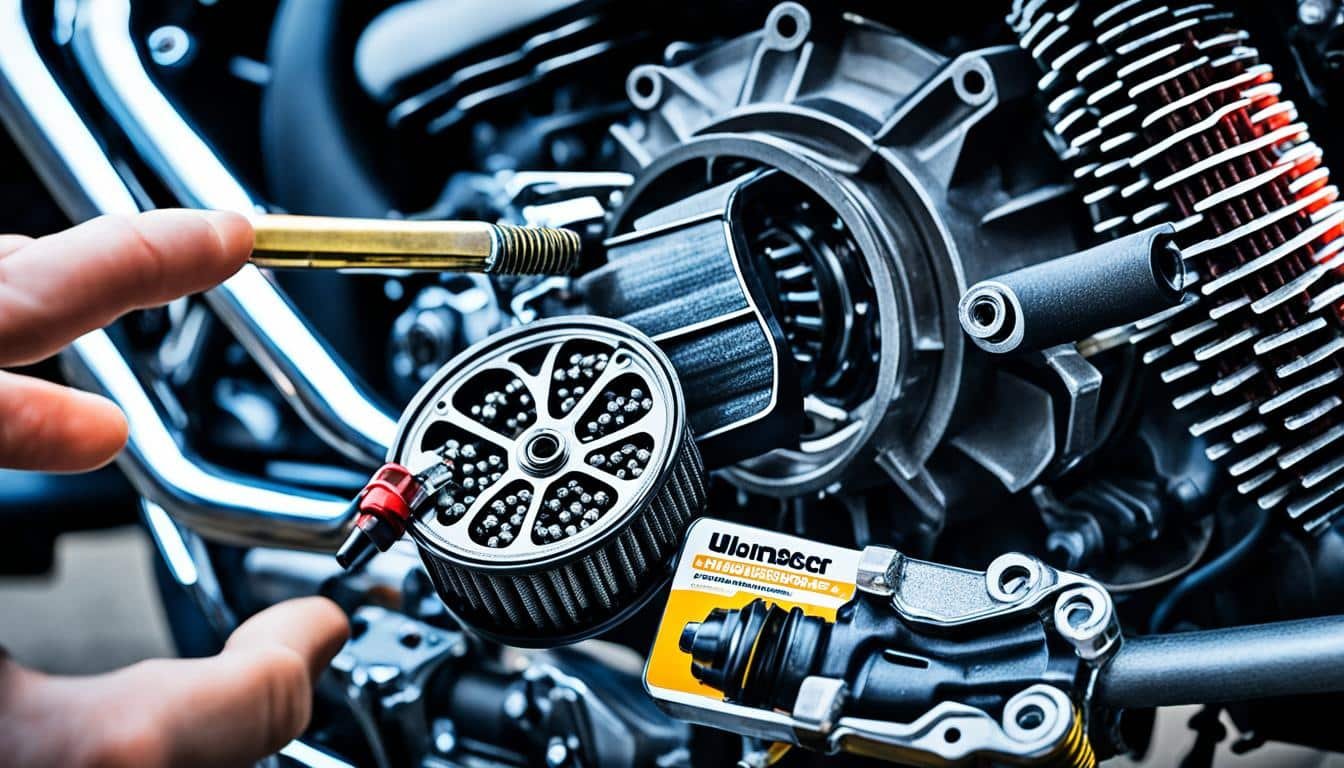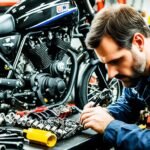Top Tips For Keeping Your UM Motorcycle Running Smoothly : Maintaining your UM motorcycle is essential to ensure optimal performance and longevity. By following these top tips, you can keep your bike running smoothly and enjoy years of trouble-free riding.
The breaking-in period is crucial for a new motorcycle’s long-term performance. Follow the manufacturer’s recommended break-in method outlined in the owner’s manual. Avoid aggressive riding during the first 500 to 1,000 miles to improve engine longevity, lower emissions, and achieve better fuel economy.
Regular maintenance is key to keeping your motorcycle in peak condition. Create a maintenance checklist that includes tasks such as oil changes, brake inspections, and checking tire pressure. Follow the manufacturer’s recommended maintenance schedule for your specific UM motorcycle model.
Properly maintaining your motorcycle’s engine is vital. Change the engine oil regularly according to the manufacturer’s recommendations. Use high-quality oil and filters designed for your motorcycle to keep it running smoothly. Consider subscribing to reputable sources like YouTube channels for tutorials and tips on maintaining your specific make and model.
Ensuring proper suspension setup is crucial for a smooth and comfortable ride. Set your sag and adjust the rear preload to achieve the desired suspension compression. Refer to the owner’s manual or consult a suspension specialist for recommended settings for front and/or rear compression and rebound adjustments.
Optimizing your riding position and controls can greatly enhance comfort and control. Adjust the handlebars, levers, cables, and foot controls to suit your body and riding style. Set the handlebars at a position that allows for comfortable riding and adjust the levers and foot controls for optimal reach and comfort.
Fine-tuning ancillary adjustments such as seats and windscreens can enhance your riding experience. Adjust the seat for the best riding position and comfort. Experiment with different windscreen heights to find the optimal balance between wind protection and visibility.
Tire maintenance is crucial for safety and performance. Regularly check the tire pressure and ensure that it matches the manufacturer’s recommendations. Replace worn or damaged tires and consider investing in a tire pressure monitoring system for added convenience and safety.
Regular inspections are essential to identify any issues or potential problems. Conduct visual inspections for damage, leaks, and worn components. Keep track of mileage and monitor the functioning of all lights on your motorcycle, including the headlights.
By implementing these top tips for keeping your UM motorcycle running smoothly, you can ensure optimal performance, longevity, and safety for an enjoyable riding experience. Take care of your motorcycle, and it will reward you with years of trouble-free riding.
Key Takeaways:
- Follow the manufacturer’s recommended break-in method for a new motorcycle
- Create and follow a maintenance checklist for regular upkeep
- Properly maintain the engine by regularly changing the oil
- Adjust the suspension for a smooth and comfortable ride
- Optimize your riding position and controls for enhanced comfort and control
The Importance of Proper Maintenance
Regular motorcycle maintenance is essential for keeping your bike in peak condition. By adhering to a motorcycle maintenance schedule and following a comprehensive motorcycle maintenance guide, you can ensure that your bike performs optimally and remains reliable for years to come.
Create a Motorcycle Maintenance Checklist
To stay organized and ensure that no maintenance tasks are overlooked, it’s recommended to create a motorcycle maintenance checklist. Include important tasks such as:
- Regular oil changes
- Inspecting brakes for wear and tear
- Checking tire pressure and tread condition
- Cleaning or replacing air filters
By following a checklist, you can systematically address these maintenance tasks and keep your motorcycle in excellent shape.
Follow the Manufacturer’s Recommended Maintenance Schedule
Your motorcycle’s manufacturer provides a maintenance schedule that outlines the recommended intervals for specific maintenance tasks. This schedule can typically be found in the owner’s manual. It’s important to adhere to these recommendations to ensure that your bike receives the necessary care it needs.
Refer to a Comprehensive Motorcycle Maintenance Guide
For step-by-step instructions on various maintenance tasks, consult a comprehensive motorcycle maintenance guide. These guides provide detailed explanations and tutorials to help you perform maintenance accurately and efficiently. They cover a wide range of topics, from basic maintenance tasks to more advanced repairs.
Following a proper motorcycle maintenance checklist, adhering to the manufacturer’s maintenance schedule, and referencing a reliable motorcycle maintenance guide will ensure that your bike remains in optimal condition and operates safely on the road.
Tips for Maintaining Your Motorcycle’s Engine
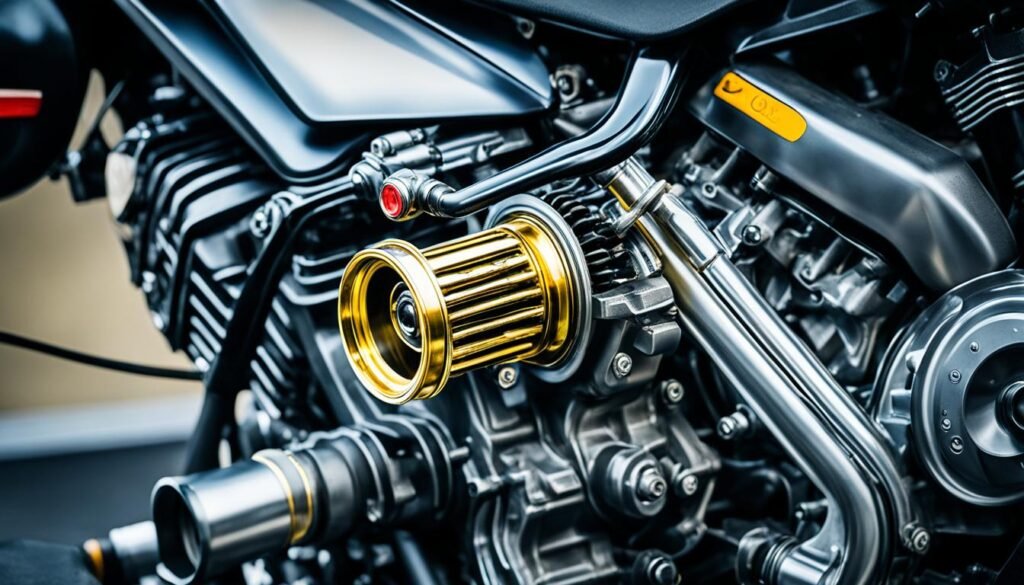
Maintaining your motorcycle’s engine is crucial to make sure it runs smoothly and stays in optimal condition. Here are some essential tips to keep in mind:
- Regularly change the engine oil: Follow the manufacturer’s recommendations for oil change intervals. Using high-quality engine oil and filters specifically designed for your motorcycle ensures optimal performance and protects the engine from wear and tear. Regular oil changes help keep your engine running smoothly and improve its longevity.
- Consider visiting a trusted mechanic: If you’re not comfortable performing maintenance tasks yourself, it’s a good idea to take your bike to a trusted mechanic who specializes in motorcycle maintenance. A professional mechanic can ensure that all necessary maintenance tasks are performed correctly and help identify any potential issues before they become major problems.
- Subscribe to reliable sources: Stay informed about the best practices for maintaining your particular make and model of motorcycle by subscribing to reliable sources such as YouTube channels or websites that provide tutorials and tips. These sources often offer valuable insights and step-by-step instructions to help you take care of your motorcycle and keep it running smoothly.
By following these tips, you can ensure that your motorcycle’s engine remains in top shape, allowing you to enjoy a smooth and reliable riding experience.
Ensuring Proper Suspension Setup
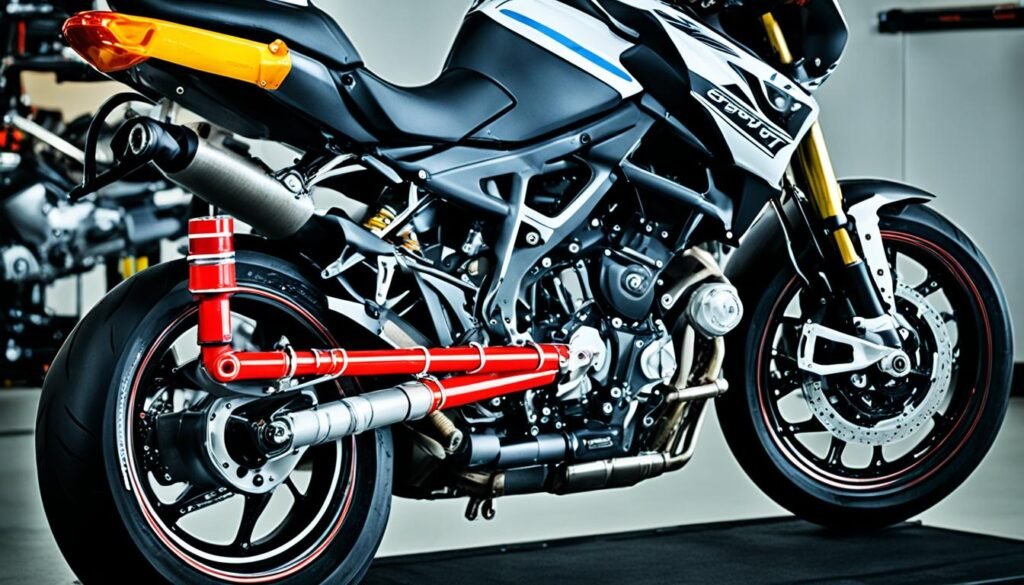
Proper suspension setup is crucial for a smooth and comfortable ride on your UM motorcycle. Achieving the right suspension tune can greatly enhance your overall riding experience. Here are some key steps to ensure proper suspension setting:
Set Your Sag
To start, it’s important to set your sag correctly. Sag refers to the amount the suspension compresses when you’re seated on the bike. It plays a significant role in bike handling and suspension performance. Adjusting sag involves finding the optimal balance between comfort and responsiveness.
Remember, the recommended sag setting is typically around one third of the total suspension travel.
| Key Steps for Setting Sag: |
|---|
| 1. Place the motorcycle on a stand so that both wheels are off the ground. |
| 2. Sit on the bike in your normal riding position while a helper measures the suspension sag. |
| 3. Adjust the rear preload to achieve the desired sag. Consult your owner’s manual for specific instructions on adjusting the preload. |
Compression and Rebound Damping
Some motorcycles have front and/or rear suspension with adjustable compression and rebound damping. These settings allow you to fine-tune the behavior of your suspension.
Compression damping controls how the suspension reacts when compressed, while rebound damping controls the extension of the suspension after compression.
Refer to your owner’s manual or consult with a suspension specialist to determine the recommended compression and rebound damping settings for your specific motorcycle model. Experimenting with different settings can help you find the optimal suspension setup for your riding style and preferences.
By investing time and effort into ensuring proper suspension setup with the right sag, compression, and rebound damping settings, you can enjoy a smoother, more controlled ride on your UM motorcycle.
Optimizing Riding Position and Controls
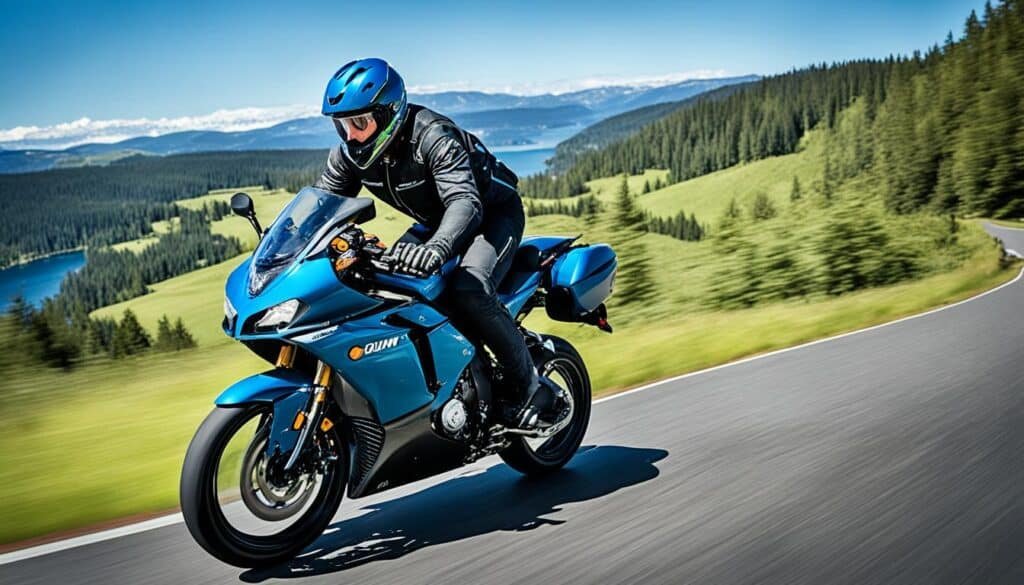
When it comes to riding a motorcycle, finding the right riding position and optimizing the controls can make all the difference in terms of comfort and control. Adjusting the handlebars, levers, cables, and foot controls to suit your body and riding style is crucial for an enjoyable and safe riding experience.
Handlebars: Set the handlebars at a position that allows your chest, shoulders, wrists, and arms to feel comfortable. Avoid extreme angles that may strain your body or restrict your movement. Finding the ideal handlebar position will help reduce fatigue and provide better control over your motorcycle.
Levers: Adjust the levers so that your wrists are straight or nearly straight when gripping them. This ergonomic position reduces the strain on your wrists, allowing for smoother operation of the clutch and brake. Make sure the levers are within easy reach and can be comfortably operated with minimal effort.
Cables: Proper cable slack is essential, especially for the throttle. Ensure there is just enough slack to prevent a jerky throttle response while maintaining a smooth ride. Check the cables regularly for any signs of wear or damage and replace them if necessary.
Foot Controls: Adjust the foot controls, such as the shift lever and brake pedal, for optimal reach and comfort. Your feet should rest naturally on the controls, allowing for effortless shifts and precise braking. Finding the right position for your foot controls will enhance your overall riding experience and reduce any discomfort or strain.
Remember, everyone’s body is different, so take the time to experiment and find the riding position and control settings that work best for you. Making these adjustments can greatly improve your comfort, control, and overall enjoyment while riding your motorcycle.
| Benefits | Description |
|---|---|
| Comfort | Reduce fatigue and strain on your body, allowing for longer and more enjoyable rides. |
| Control | Enhance your control over the motorcycle, improving safety and maneuverability. |
| Efficiency | Optimal control settings enable smoother operation and better response from the bike. |
| Reduced Fatigue | An ergonomic riding position and properly adjusted controls minimize fatigue, enabling you to ride for longer periods. |
Tips for Optimizing Your Riding Position
- Experiment with different handlebar positions to find the one that is most comfortable for your body.
- Adjust the levers so that your wrists are in a natural, comfortable position when operating them.
- Ensure proper cable slack, especially for the throttle, by regularly checking and adjusting as needed.
- Customize the foot controls to suit your reach and comfort, allowing for effortless shifts and precise braking.
Optimizing your riding position and controls is a highly personal process that requires attention to detail and a willingness to experiment. Taking the time to find the right adjustments for your body and riding style will result in a more comfortable and enjoyable riding experience.
Fine-tuning Ancillary Adjustments
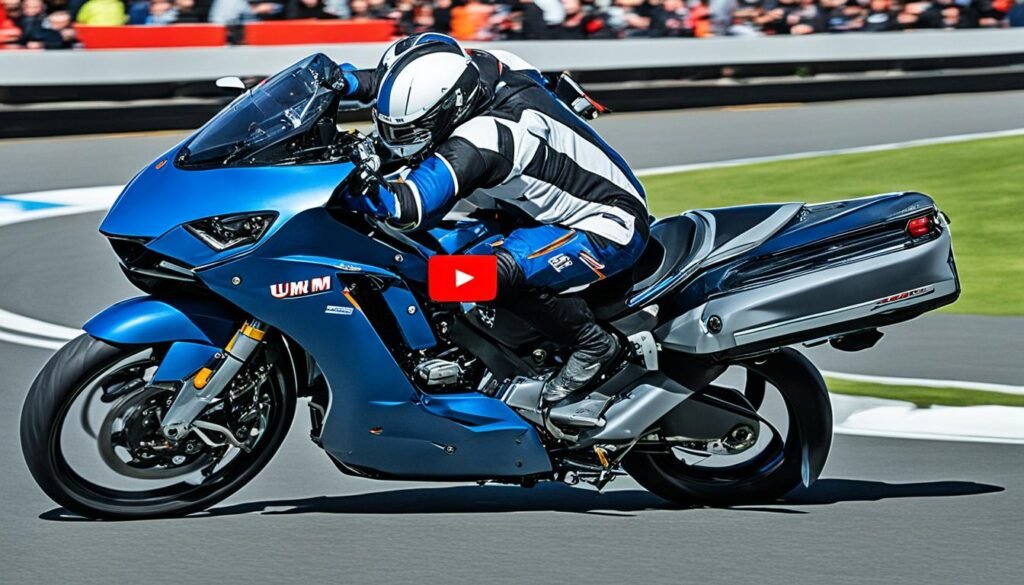
Some motorcycles offer additional adjustable features that allow riders to customize their bike to suit their body and preferences. Two important adjustable features are seats and windscreens. Making use of these adjustments can greatly enhance your riding experience by improving comfort and optimizing wind protection.
One of the key adjustable features on a motorcycle is the seat. Adjusting the seat can help you find the best riding position for your body and maximize comfort on long journeys. By experimenting with different seat positions, you can find the perfect balance between ergonomics and support.
If your motorcycle has an adjustable windscreen, take the time to experiment with different heights. Finding the optimal height can strike a balance between wind protection and visibility. Adjusting the windscreen can help reduce wind fatigue and ensure a clearer view of the road ahead.
These minor adjustments can significantly improve your overall riding experience. It’s important to take advantage of the adjustable features on your motorcycle to create a setup that suits your individual needs.
The Role of Proper Tire Maintenance
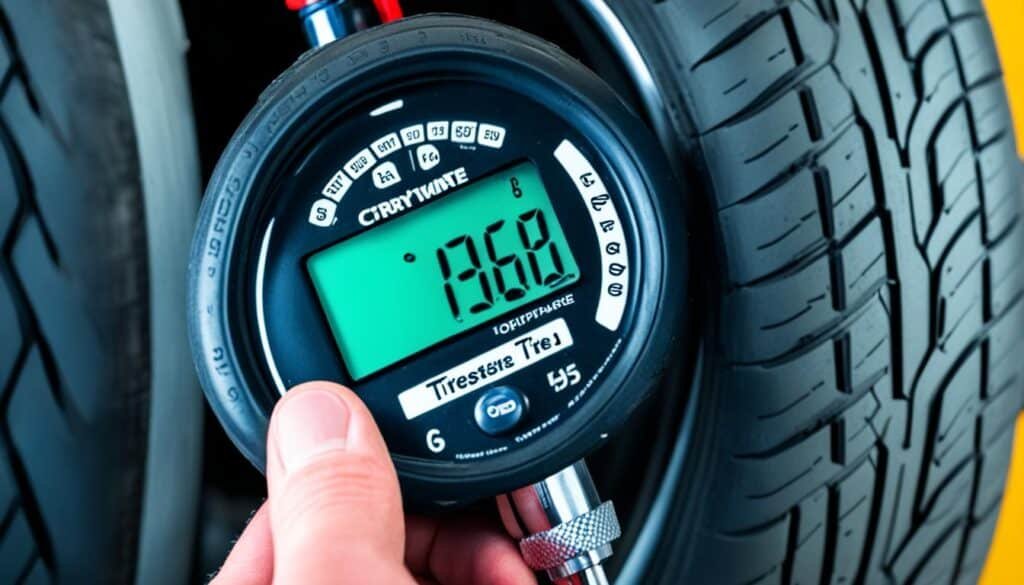
Proper tire maintenance plays a crucial role in ensuring the overall performance and safety of your motorcycle. One important aspect of tire maintenance is maintaining the correct tire pressure. By regularly checking and adjusting tire pressure, you can significantly enhance both the lifespan of your tires and the overall performance of your bike.
Refer to the manufacturer’s recommendations for the correct tire pressure for your motorcycle. These recommendations can usually be found in the owner’s manual or on the manufacturer’s website. It’s important to use a reliable tire pressure gauge to ensure accurate readings.
Keeping your tires properly inflated offers several benefits, including improved traction and handling. When a tire is underinflated, its contact patch with the road increases, leading to increased rolling resistance, decreased fuel efficiency, and uneven wear. On the other hand, overinflated tires have a smaller contact patch, reducing traction and negatively impacting ride comfort.
To monitor the condition of your tires, regularly inspect the tread wear. Worn or damaged tires should be replaced promptly to maintain optimal performance and safety on the road. Additionally, consider investing in a tire pressure monitoring system (TPMS) for added convenience. TPMS sensors provide real-time tire pressure information, allowing you to monitor tire pressure without manually checking it.
Proper tire maintenance should be a regular part of your motorcycle care routine. By keeping your tires properly inflated and monitoring their condition, you can ensure a safer and more enjoyable riding experience. Take the time to check your tire pressure regularly and make any necessary adjustments to keep your motorcycle running at its best.
| Inflation Level | Effects |
|---|---|
| Underinflated |
|
| Overinflated |
|
| Properly Inflated |
|
Importance of Regular Inspections

Regular inspections are vital for maintaining the optimal performance and safety of your motorcycle. By conducting thorough inspections, you can identify any issues or potential problems before they escalate into major concerns. Some key aspects to inspect include:
- Visible Damage: Check for any signs of visible damage, such as dents, scratches, or cracks, on your motorcycle’s body, frame, and other components.
- Leaks: Look out for any fluid leaks, such as oil, coolant, or brake fluid, which can indicate underlying mechanical issues.
- Loose Bolts: Ensure that all nuts, bolts, and fasteners are securely tightened to prevent any parts from coming loose during rides.
- Worn Components: Examine critical components like brake pads, tires, and drive belts for signs of wear and tear. Replace any worn-out parts promptly to maintain optimal performance.
In addition to these inspections, it’s essential to regularly check the mileage on your motorcycle. Keeping track of the mileage allows you to schedule maintenance tasks, such as oil changes, at the appropriate intervals recommended by the manufacturer.
One crucial component to inspect during these regular checks is the headlight. Ensure that all lights on your motorcycle, including the headlights, are functioning correctly. Properly functioning headlights are essential for visibility and safety, especially during nighttime rides or in low-light conditions.
Regular inspections provide you with the opportunity to address any issues promptly, preventing further damage or potentially dangerous situations on the road.
Maintenance Checklist
| Inspection Area | Description |
|---|---|
| Visible Damage | Look for dents, scratches, or cracks on the body and frame. |
| Leaks | Check for any fluid leaks, such as oil, coolant, or brake fluid. |
| Loose Bolts | Ensure all nuts, bolts, and fasteners are securely tightened. |
| Worn Components | Inspect brake pads, tires, and drive belts for signs of wear and tear. |
| Mileage | Monitor the mileage to schedule maintenance tasks at the appropriate intervals. |
| Headlights | Check that all lights, including the headlights, are functioning properly. |
Conclusion
By following these top tips for keeping your UM motorcycle running smoothly, you can ensure optimal performance, longevity, and safety. Proper maintenance, including following the manufacturer’s recommendations for break-in and regular maintenance, adjusting key components to fit your body and riding style, and staying vigilant with inspections, will contribute to a smoother and more enjoyable riding experience. Take care of your motorcycle, and it will reward you with years of trouble-free riding.
Also Refer : Shipping Your UM Motorcycle Internationally Made Simple
FAQs
Q: What are some maintenance tips for keeping my UM motorcycle running smoothly?
A: To keep your motorcycle running smoothly, make sure to perform regular maintenance such as checking the oil, maintaining proper tire pressure, and keeping the chain well-lubricated transcript. It’s also important to keep an eye on brake pads, brake fluid, and the overall condition of the bike.
Q: How often should I bring my motorcycle to a mechanic for maintenance?
A: It’s recommended to have your motorcycle serviced by a professional mechanic according to the manufacturer’s guidelines, which usually include regular intervals for oil changes, fluid checks, and overall inspections.
Q: What are some riding tips to keep my motorcycle in good condition?
A: Riding at a steady pace, avoiding sudden acceleration and braking, and practicing smooth and controlled maneuvers can help keep your motorcycle in good condition. Additionally, proper slow speed motorcycle operation and skillful cone handling can contribute to the longevity of your bike.
Q: Does the type of oil I use make a difference in the performance of my motorcycle?
A: Yes, using the right type of oil for your motorcycle can significantly impact its performance and longevity. Consult the owner’s manual or a professional for the recommended oil specifications for your specific UM motorcycle model.
Q: What are some common issues that can affect the smooth operation of my motorcycle?
A: Common issues that can impact the smooth operation of a motorcycle include worn-out brake pads, improper tire pressure, chain tension, and alignment, as well as engine-related issues such as dirty air filters and spark plugs.
Q: How can I ensure that I am the boss of my motorcycle?
A: By staying on top of regular maintenance, adhering to safe riding practices, and being attentive to any changes in the bike’s performance, you can maintain control and be the boss of your motorcycle’s upkeep and operation.
Q: What are some tips for maintaining the brakes of my motorcycle?
A: Regularly inspecting the brake pads and discs for wear, ensuring proper brake fluid levels, and keeping the braking system clean and well-maintained are essential for keeping the brakes of your UM motorcycle in top condition.
